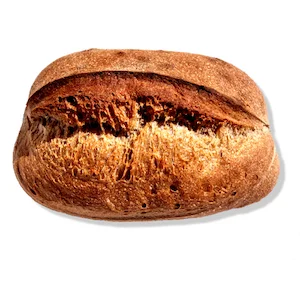About my Bread
Bread is culture: Bread is a staple in many cultures. In Germany, bread is eaten at breakfast and dinner (lunch traditionally is the hot meal). Usually several different types of bread and/or buns are available at each meal that can be paired with different cheeses, cold cuts, jams and other tasty toppings. There are estimates that Germany has 3,000 different breads. Just as important as baguettes are to the French, so are dark and multi-grain breads to Germany.
Bread is healthy: Bread, especially whole grain bread, has high amounts of iron, fiber and B vitamins, high amounts of protein, calcium, thiamine, manganese, zinc and folate (especially important during pregnancy). Nutritionists recommend including bread as part of a healthy diet, especially when eaten with healthy fats and protein. And don’t forget those veggies and fruit.
Simple ingredients: Bread is traditionally vegan, made with flour, salt, water, yeast (e.g. wild yeast such as in sourdough) and patience. This is how I make my bread, using a variety of flours, including ancient grains such as Spelt, Sorghum, and Millet, with a focus on whole grain flours. My recipes are created to balance flavor, texture, and whole grain content (the more whole grain, the denser the bread tends to be).
Each bread is developed to have a unique character that pairs well with certain foods or occasions. A selection of the breads use gluten-free flours such as Millet and Sorghum, for people who have issues with gluten. I pay special attention to make sure that these gluten-free breads have good flavor, texture, and a personality that matches the experience of eating regular wheat breads.
Interesting links: about German bread culture, about the nutritional importance of bread

See available bread options, flavor profiles, and ingredients:
